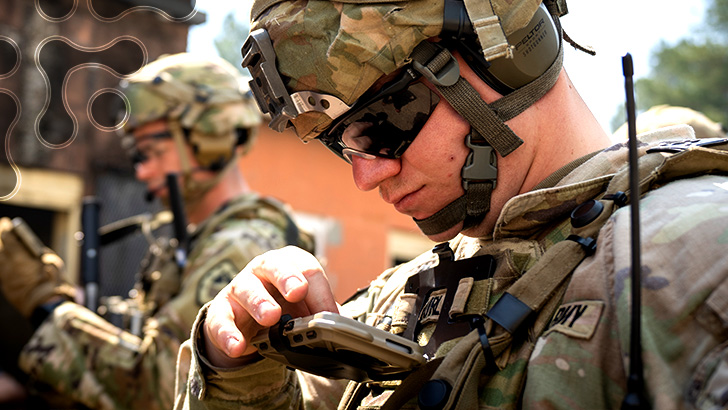

By Daniel Smoot, Office of Army Innovation Programs, including xTech and the Army SBIR|STTR Program
WASHINGTON – The U.S. Army released a new funding opportunity for immersive, wearable and sensor technologies through its Small Business Innovation Research and Small Business Technology Transfer Program. Starting in March 2025, the Wearable Sensors to Monitor Environmental Occupational Impacts to Brain Health solicitation aims to enhance warfighter safety by measuring exposure to explosive blasts during weapon systems operations.
Army Challenge
The Army seeks a state-of-the-art blast gauge sensor for high-risk scenarios involving weapon systems or explosives, in both open terrains and confined spaces. The Army requires small businesses to develop an advanced wearable sensor that measures 360-degree blast exposure, either integrated into a kit or as a standalone unit. This sensor must have a high sampling rate to accurately capture multiple blast waveforms, essential for measuring overpressure, acceleration and acoustic parameters.
Additionally, the technology must include a user-friendly dashboard compatible with Nett Warrior-enabled devices (Android, Windows, Linux, and HTML). Army leaders will monitor exposure in real-time, presenting status updates through programmable ranges. The sensor will store data locally until it securely transfers to a repository and links to the wearer’s Common Access Card for Public Key Infrastructure storage. The data will transfer to a lakehouse, ensuring distribution to multiple users and allowing partial data set access. The sensor must be reusable, rechargeable and designed for minimal user intervention during data retrieval processes.
Army SBIR|STTR Submission Window
Get Started
Visit the Army SBIR|STTR website and linked topic pages for more details. Submit proposals via the Defense SBIR|STTR Innovation Portal.
About the Army SBIR|STTR Program
The Army SBIR|STTR Program’s SBIR portfolio continuously releases funding opportunities, including Phase I funding for commercially viable, feasible and technically sound solutions. Firms with mature technologies meeting Phase I requirements can advance to Phase II or Direct to Phase II contracts. Throughout the process, technical, acquisition, and operational Army experts guide businesses to align their innovations with the Army’s critical needs.
The Army STTR portfolio integrates small businesses in the Army innovation ecosystem by partnering them with universities, federally funded research and development centers, or qualified non-profit research institutions, with small businesses as the prime contractors. Small businesses must act as prime contractors, performing at least 40% of the work while research partners perform at least 30%.
ASA(ALT) leverages innovative technologies to give Soldiers a decisive advantage in any environment by developing, acquiring, fielding and sustaining the world’s finest equipment and services. For more information, visit the ASA(ALT) web page and follow @ArmyASAALT.
Stay Updated
Subscribe to email updates or check back on the Army SBIR|STTR website. Follow us on Facebook, X (formerly Twitter) and LinkedIn. For inquiries, contact us at the Army SBIR|STTR mailbox and the Army xTech mailbox.
